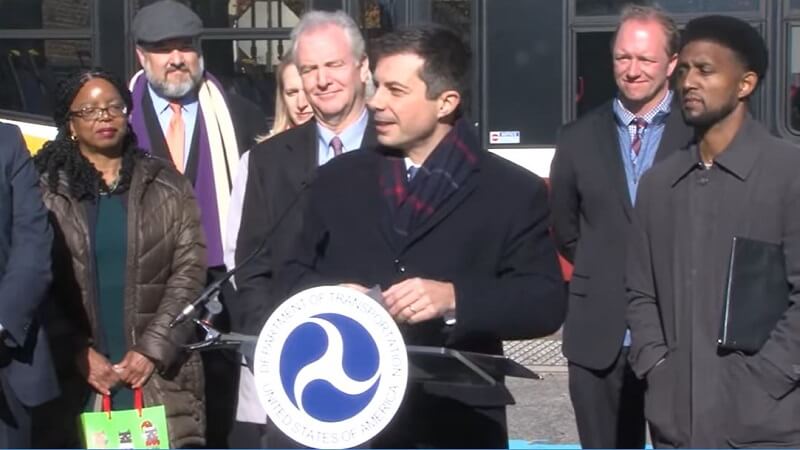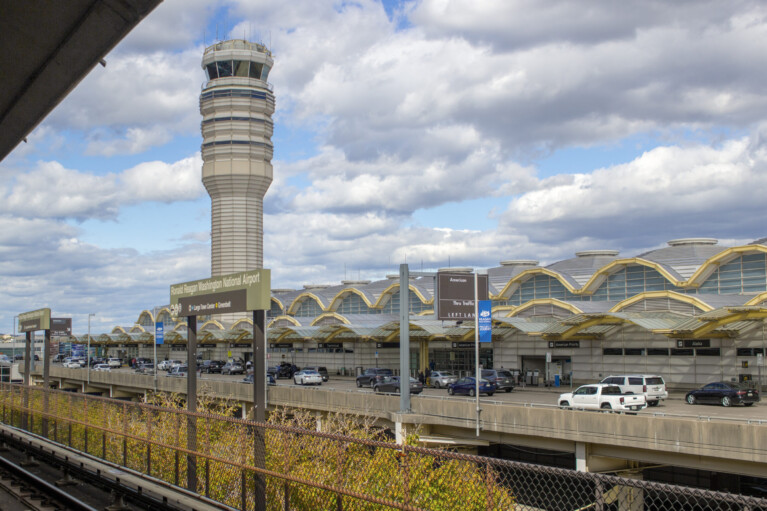
By Jonathan Sacks
The writer is the lead for the Baltimore-Washington Transportation Research Group’s West Baltimore Project.
Last week, many of the major politicians and transportation leaders representing Baltimore — from a senator to the mayor to the U.S. and state transportation secretaries — gathered to announce the city’s big award from the $1.2 trillion infrastructure bill. Wait for it … $22 million for some improved bus stops.
Really?
They all stood up and talked about what a great leap forward this new suite of bus improvements is going to be — pulled largely from a playbook known in transportation circles as bus rapid transit, or BRT.
Some shelters for bus riders (dare to dream). A few spots — not in the congested downtown of course — where a bus might have a segregated lane that, in theory, will only be used by it. And another attempt in certain areas to give the buses priority with light changes at intersections — a technology the MTA has yet to figure out, even for its decades-old north-south light rail line.
Moreover, transportation experts point out that the current plan appears to bypass the “Highway to Nowhere” and not use that expressway — so for many riders, the trip will be even slower and less reliable than it is now.
Is this what Baltimore transit riders get from the “big infrastructure win”?
What’s really needed now is a reboot of the east-west Red Line light rail project in anticipation of our rail-hating, suburban real estate-developing governor finally being gone from Annapolis in a year and a half.
Six years ago, he canceled that key planned east-west leg of the city’s transportation network. A decade and a half of planning, countless hours of community meetings, $300 million in expenditures and hundreds more millions in proposed train-related development went down the drain — along with nearly a billion (that’s a B!) dollars in federal funds.
In its place, Baltimore’s low- and middle-income transit riders got a $135 million BaltimoreLink rebrand of the bus system that’s been universally panned. And now, we get another $22 million bus bone thrown at us.
BRT is a suburban “last-mile” solution that only works when there are faster rail spines to feed into. Look just down the road at Montgomery County, where BRT is designed to feed into the city’s tremendous Metro system, and its Purple Line (if the years-long setback from the governor’s privatizing of that line’s construction can ever be overcome).
Or take the much-heralded BRT system in the York district of Toronto, where it’s the same story: a suburban location, where stops can be spread out a mile or two apart, simple intersections where lights can be timed, and plenty of land to segregate buses.
Or in the urban setting, look at the poster child for a city BRT system: Cleveland’s HealthLine. Only problem here — ridership is down more than 25% since 2014 and trip times are back up to pre-BRT years. And that was before COVID.
BRT in an urban setting, and without rail spines to feed into, is a smokescreen for transit disinvestment.
Where once we had billions allocated for a true east-west rapid rail spine in Baltimore — one that could connect directly into half-hour MARC trips to Washington at the West Baltimore station — instead we now have better signage and the promise of a few better bus stops.
Really? Is this all we can do in Baltimore?





 Creative Commons Attribution
Creative Commons Attribution